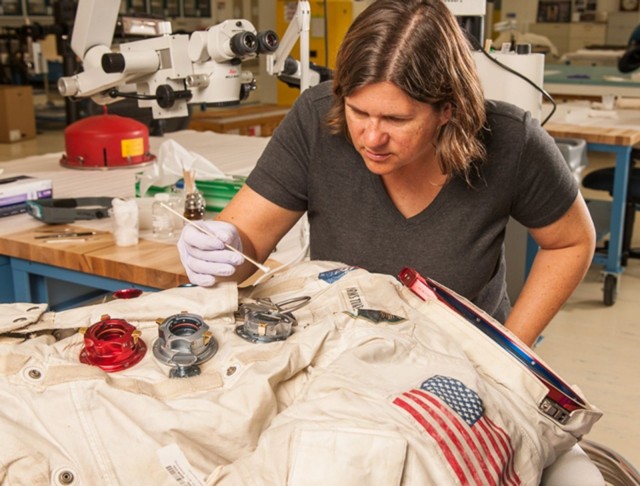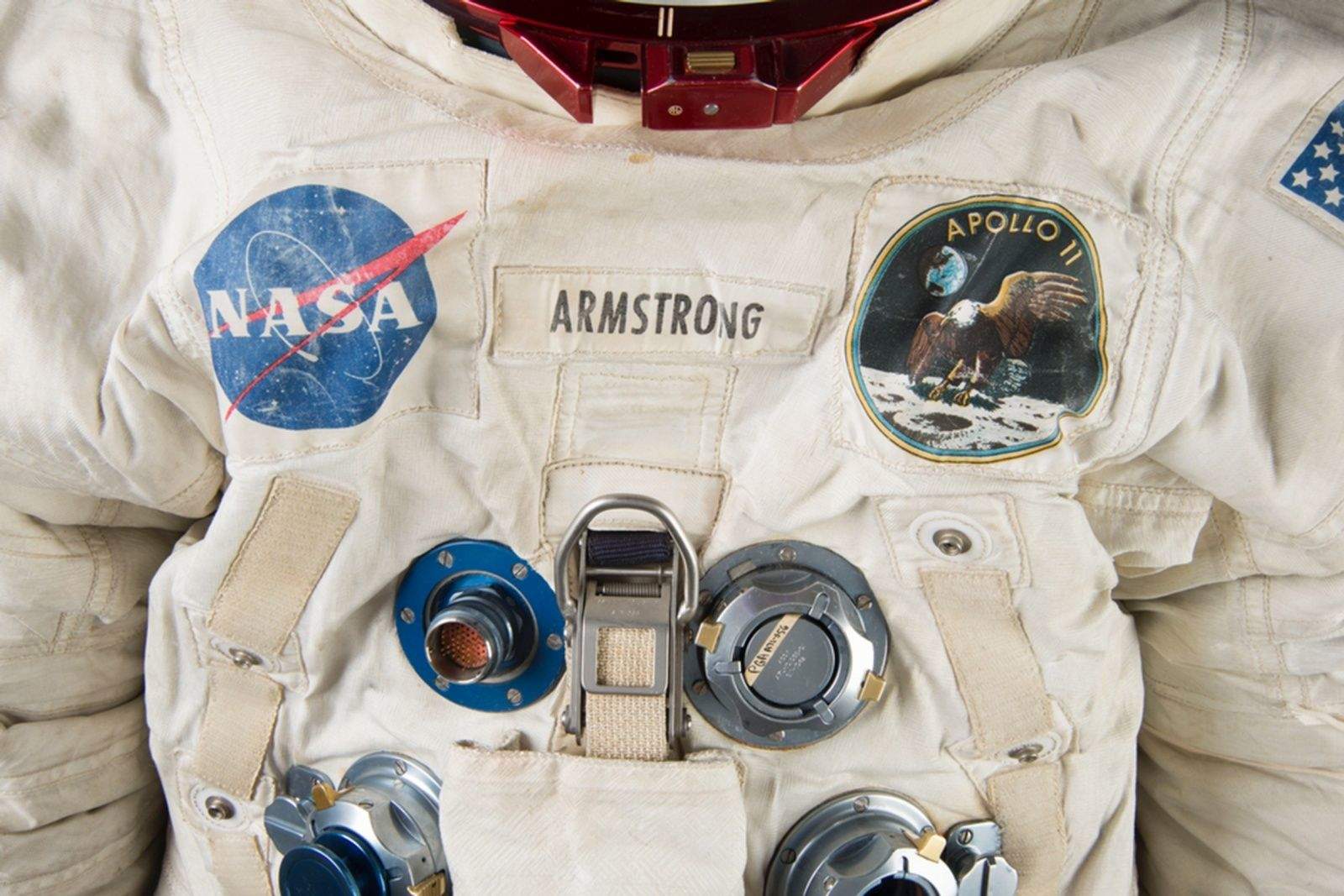What are the artifacts that define America’s greatest moments? Two are the original Declaration of Independence and the Star-Spangled Banner that inspired the Francis Scott Key song.
If you see those in the top three, the third might be the suit Neil Armstrong wore when he stepped onto the moon’s surface.
While the suit was constructed to make it to the moon and back, it was not built to last forever. The Smithsonian National Air and Space Museum is raising money for a major restoration project to get the Armstrong suit ready for public display on the 50th anniversary of the Apollo 11 moon landing in 2019.
The museum’s Kickstarter campaign, Reboot The Suit, is already close to raising its goal of $500,000 for a meticulous preservation effort that will also include 3D models that will give students and educators virtual access to this suit.

Photo: Eric Long/Smithsonian National Air and Space Museum
Armstrong was the first astronaut to set foot on the lunar surface, the crowning achievement of America’s space program and a boost to American pride as the country waged a Cold War against the Soviet Union, which was the first to put a man in space.
The space suits are considered some of the most fragile artifacts in the Smithsonian archives. They rest in a climate controlled vault.
Parts of Armstrong’s suit remain caked in lunar dust that rests under the fibers. Colored silk on the mission patch and American flag have faded. There are some orange stains of an unknown source and a couple of tears hastily stitched.
“(The spacesuit) was made for the very specific purposed of preserving human life in the harsh conditions of space and the surface of the Moon for a very brief period of time,” curator Cathy Lewis told the museum’s AirSpaceBlog. “The spacesuit was constructed from a combination of 12 synthetic materials with as many as 21 layers. These materials have a half-life of approximately 50 years and have been the inevitable process of degrading. Some of the materials have begun to interact with others.”

Photo: Dane Penland/Smithsonian National Air and Space Museum
The money will cover state-of-the-art 3D scanning, photogrammetry and chemical analysis to create a detailed map of the suit and understand the areas of the suit that need attention. It will also help the museum understand the proper atmospheric conditions needed for the construction of a display case.
While the Smithsonian receives federal funding, preservation projects are not covered. This is the museum’s first Kickstarter campaign.
The Smithsonian is offering a variety of perks for backers of the Kickstarter campaign, from a Reboot the Suit mission patch and space ice cream to scan data of one of Armstrong’s gloves that you can download and 3D print a replica.
The campaign has already raised more than $495,000 with 25 days to go and should crowdfunding reach the $700,000 mark, it will allow the museum to perform conservation efforts to the silver Mercury suit of Alan Shepard, the first American in space.


